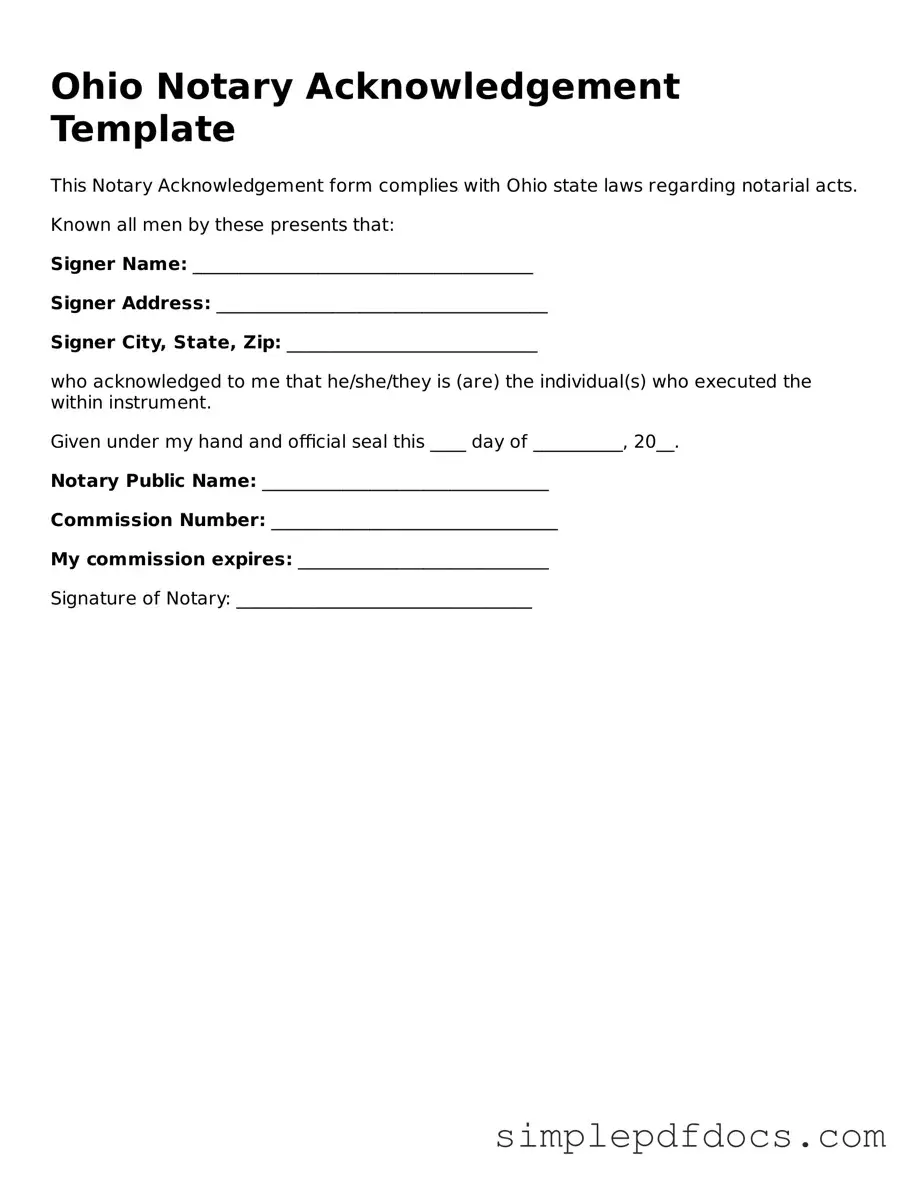In the realm of legal documentation, the Ohio Notary Acknowledgement form plays a crucial role in ensuring the authenticity and integrity of various transactions. This form serves as a written declaration by a notary public, affirming that the individual signing a document has done so willingly and is, in fact, who they claim to be. Essential in a variety of situations, such as real estate transactions, legal contracts, and other formal agreements, the form helps prevent fraud and protects the interests of all parties involved. The Ohio Notary Acknowledgement includes vital information such as the name of the signer, the date of the acknowledgment, and the notary’s official seal. Understanding how to properly complete and utilize this form is important for anyone engaging in legal matters in Ohio, as it not only validates the document but also ensures compliance with state laws. As such, navigating the intricacies of this form can be beneficial for individuals and businesses alike, providing peace of mind in their legal dealings.
